A revised version of this article has since been published on Medium to mark 25 years of Shadow Raiders - please click here to enjoy a smoother reader experience across most platforms and devices (free to read and with better pictures, too).
I recently re-watched the entire run of Mainframe's Shadow Raiders. It was as exciting and inventive as I remembered and, 18 years after its debut, is re-confirmed as one of my all-time favourite SF TV series. Mainframe was a Canadian computer graphics and animation production company, responsible for the ground-breaking video for the 1985 Dire Straits single, Money For Nothing, and for the first fully CGI television series, ReBoot. They were also responsible for bringing the series of far-better-than-they-have-to-be Barbie movies to the screen - Island Princess being a favourite of mine - and later developed into what is now Rainmaker Entertainment Inc.
 |
| Shadow Raiders the fantastic, yet underrated, SF TV classic (1998 - 1999) |
Shadow Raiders is just one of an array of spectacular series created entirely from computer animation by Mainframe, its multi-award winning makers. What marks it aside from the other Mainframe shows, such as ReBoot, and the new Transformers, is its particularly well structured plots and some intense moments capable of bringing a tear to the eye, or instigating a jump from the sofa with a fist in the air as our heroes triumph over insurmountable odds... Such is its power to immerse the viewer in its fantastical reality populated by sympathetic and convincing characters. Even though the regular cast consists of a giant blue insect, a boy whose head is on fire, a shiny robot babe, a short fat lizard and a couple of hefty stone people, it is surprisingly easy to forget that what you are watching is CGI!
Of course, the awe inspiring talents of the CGI animators have much to do with this suspension of disbelief, as do the excellent voice actors, but it is within the writing that the real strength resides. The stable of writers includes Christy Marx, who has also written for Babylon 5. Some elements may seem reminiscent of Babylon 5, such as the shadowy beast drones, the world-killing beast planet, the great machines of the world engines concealed deep within planets, remnants of some ancient alien technology... But there, any similarities end. Shadow Raiders is 'proper grown up SF' and takes its story-telling just as seriously, but is not averse to going for all-out laser battles and exciting starfighter sequences. Plus, it seems highly unlikely that the Beast's minions would ever 'get the hell out of our universe' just because we told 'em to. No, they enjoy consuming planets and extinguishing all life far too much! The only way they will go out is with a humongous bang and plenty of drama, never a whimper or an anti-climax...
The Vice President in charge of Operations at Mainframe is British-born Phil Mitchell, whose job involves running all aspects of production and development for TV. Phil is also one of the original developers of the seminal series, ReBoot. Remy Dean caught up with Phil to ask him a little bit about Shadow Raiders - how the show came to be and what may yet become of it...
 |
| Press shots of some of the 'synthespian' cast of Shadow Raiders |
PM: No - that would be using a method called 'motion-capture' in which real actors don a suit covered in sensors and their movements are fed into the computer to provide a basic set of motions which the animators then refine. What we do is called 'keyframe animation' and there are no real actors involved - except the voices. We do encourage the use of 'real-world' reference - animation is all about observation. So, by self-observation, watching movies, et cetera, on tape, the animators see how real actors behave, and put this knowledge into their own work.
Are the characters actually based on real people? Julia reminded me of Louise Brooks.
Not deliberately, but we draw our inspiration from many sources. It's possible that Louise Brooks was in there somewhere!
Could a member of the 'synthespian' cast interact in real time?
Given enough money and computing power anything is possible - but we are not equipped to do that sort of thing at the moment.
What comes first, the ability to render a visual idea or an artist’s concept? In other words, do the concept designers and directors set real challenges, or does everyone work within the parameters of what is known to be possible?
Both. We like to push the bounds of what is accepted as 'possible', but at the same time must bear in mind the constraints of production. Often concepts that work on paper are just too involved from a logistics, time, resources, and manpower point of view. But we like the problems that these situations pose - they demand creative solutions, and push everyone's creativity.
It also depends on where the idea came from. A children's book? A comic? A story treatment? Is there original art or not? Do we have to follow it thematically, or are we free to take it in another direction? The production designers are the creators of the visual look of any project. They do illustrations, then from that we create models inside the computer. We sometimes try lots of different looks before the final character or set designs are arrived at.
How closely do the animators and the writers work together?
Not very: The writers work closely with the Producer and Creative Director of each series.
Shadow Raiders was initially based on a line of toys and games. How detailed were the guidelines from Trendmasters, the toy manufacturers, as to the show's content?
It was a collaborative process really because the original toy line didn't have many characters and we had to develop some new ones to give the series an interesting cast.
The scope of Shadow Raiders is certainly on an epic scale and has been likened to Star Wars. It reminded me a little of other golden age science fiction, like Flash Gordon, too. What do you perceive as being the show's major influences, on both its look and content?
Good question. I guess everything from those 50s Hollywood epics to the science fiction cornerstones of 70s TV. Basically, we took a whole bunch of stuff and distilled it down to what seemed appropriate to the subject matter.
How rigid is the main story arc and how long is it planned to last?
Shadow Raiders was two seasons long – twenty-six episodes. It is now finished.
But, can we expect more from the War Planets universe in the future? Any more seasons on the way?
The series finished production earlier this year (1999). We are certainly looking for a new broadcaster-home for the series as we'd like to do more. There are plenty of storylines yet to be explored. We understand the series was very popular in the UK and Europe so we're talking to those broadcasters to see if we can find a way to fund further seasons for those audiences.
Thank you Phil Mitchell, and may you have every success in finding further outlets for more Shadow Raiders - it would certainly be welcome on UK screens, particularly mine!
 |
| This interview from 1999 with Mainframe's Phil Mitchell first appeared in the UK science and science fiction 'fanzine', The 5 Times, issue 20. |


.jpg)
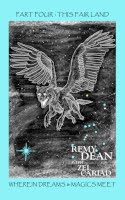
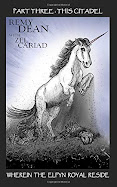
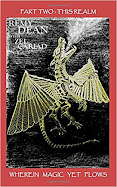

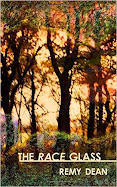
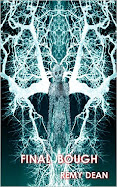





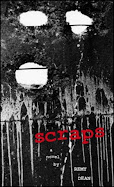





No comments:
Post a Comment